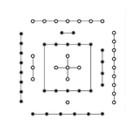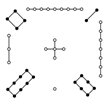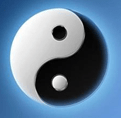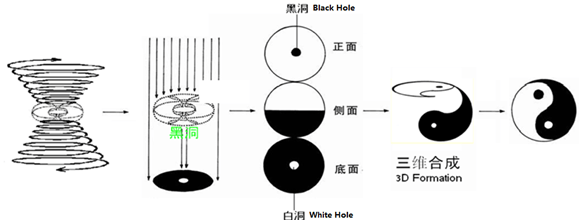To comprehend the context and meaning of the terms “the Classics,” “Chinese Medicine from the Classics,” “Chinese Medicine Classics,” “Classic Chinese Medicine,” and “CCM” used in CSTCM publications and mission statements, it is essential to provide the following explanations.
1. Basic Consensus
Chinese Medicine was transcribed in Ancient China at least 3000 years ago, and the foundational texts commonly cited are:
Among the classics listed above, the Huang Di Nei Jing (The Yellow Emperor Inner Canon) is considered the foundation book of other books.
The Huang Di Nei Jing (HDNJ) has been translated into multiple languages over the years, the version of HDNJ translated by Paul Unschuld is widely regarded as the most faithful to the original Chinese text.
Unschuld’s version includes both the Su Wen and Ling Shu, which are the two main sections of the HDNJ. The Su Wen has over 1500 pages, the Ling Shu, also known as the Spiritual Pivot, has over 700 pages.
Other translations of the HDNJ may not include all the content found in Unschuld’s version or may have different interpretations of certain passages. There are some versions of HDNJ that only have about 200-300 pages.
Therefore, for those looking to study the HDNJ in-depth, Unschuld’s version is often considered the most comprehensive and reliable. Also, CSTCM prefers to use Paul Unschuld’s versions, because he understands the classic Chinese topics deeply, and his translation is the most faithful to the original.
2. Theory Foundation
a. Qi based.
The concept of Qi is fundamental to ancient Chinese culture and is reflected in various texts such as the Tao Te Ching and the Huainanzi. It is believed to be the basic element in the universe and is integral to the practice of traditional Chinese medicine.
The Huang Di Nei Jing (HDNJ) is widely considered to be the first official medical text of Chinese medicine. It covers a range of topics related to Chinese medicine, including the theory of Yin/Yang, the Five Elements, Pulse Diagnosis, the Zang-Fu Organs, the Meridians/Channels, the Etiology, Pathogenesis, Symptoms, Diagnosis, Treatments of Disease, Disease Prevention, and the Five Yun and Six Qi.
CCM scholars have interpreted and understood all of these concepts as being based on Qi. Yin/Yang and Five Elements are the Qi’s property, Pulse is the Qi’s window, Organs function by their Qi’s level and status, Meridian/Channels are where Qi flows in and out, Etiology is how the Qi becomes imbalanced by internal/external factors, Pathogenesis is how the Qi changed in nature leading to various dysfunctions, Symptoms are the Qi’s outside appearance, Diagnosis is to know what kind of problem is in the Qi of the person, Treatment is to regulate the Qi from imbalance to balance, Prevention is to keep the Qi in accordance with nature to avoid the internal/external affect/imbalance, and Five Yun and Six Qi explains in detail the natural/cosmologic cycles of Qi and how it moves and affects a person (and everything).
So, in HDNJ chapter 3, the focus is on “Generative qi” (or “living qi”) that permeates and informs all people and all other living beings. Qi is the vital energy that animates all living things and is responsible for maintaining their health and vitality.
Therefore, the concept of Qi pervades ancient Chinese culture and is at the core of Chinese medicine. The HDNJ serves as an important guide to understanding the theoretical underpinnings and practical applications of Chinese medicine, which is still widely practiced today.
The concept of Qi is not limited to just the HDNJ. It is also a foundation of other important classic texts in Chinese medicine. For example, the Nan Jing (Classic of Difficulties) continues with the concept of Qi and elaborates on it further. It provides a deeper understanding of the HDNJ’s fundamental concept of Qi.
Moreover, the concept of Qi is also fundamental to the Shen Nong Ben Cao Jing (Divine Farmer’s Materia Medica Classic), which is an important text on herbal medicine. This book discusses single herbs and their properties in great detail. According to the Shen Nong Ben Cao Jing, every herb has its flavor, which is the main category of its Qi. Additionally, each herb has its own temperature and movement of Qi, which plays a crucial role in determining the herb’s therapeutic effects on the human body.
b. People are in unity with the universe, and CCM applies the universal model to people.
The ancient Chinese sages believed that the Dao, the principle and truth of the universe, could be understood through observing the world around them. They saw the Dao as the origin of the world, an omnipresent force that cannot be seen or touched, yet is ever-present. The Dao was described as being “big without being outside, small without being inside,” indicating its vastness and universality. It was also said that the Dao does not change, just like the heavens, and that both heaven and earth follow the Dao. This understanding of the Dao formed the basis of many Chinese philosophical and spiritual traditions, including Confucianism, Taoism, and Chinese Medicine.
The ancient Chinese sages used various numerical models and symbols to represent the concepts of the Dao, Yin/Yang, and Qi.

The HeTu, also known as the River Chart, is one of the most useful models. In the HeTu, hollow dots represent yang and solid dots represent yin. Each dot is placed in a specific position within the grid, representing a direction and an associated element. The numerical values within the squares represent the amount of qi associated with each element. Through the usage of static dots, the HeTu can represent dynamic movements and transformations of the universe, reflecting the concept of the Dao.

Luo Shu Square is another model. It is a 3×3 grid that contains nine squares, each with a numerical value and an associated trigram. These trigrams are composed of solid and hollow lines, representing yin and yang respectively.

The Taiji diagram, also known as the Yin-Yang diagram, is a symbol that represents the complementary and interconnected nature of yin and yang in the universe. The diagram consists of two interlocking teardrop shapes, one black representing yin and the other white representing yang. Yang ascends on the left to form heaven, while Yin descends on the right to form earth. Based on the quality of Yin and Yang, it is further divided into three yin and three yang, forming the six basic elements of the universe. The Taiji diagram is a fundamental concept in Chinese culture and is used to understand the interplay between different phenomena, including health and disease in Chinese medicine.
With the development and progress of technology, we can now use three-dimensional models to represent the Dao. The three-dimensional model of the Dao is represented by a double spiral structure. The double spiral structure is a three-dimensional representation of the Dao, which is also known as the structure of the universe. It consists of two interwoven spirals, one clockwise and the other counterclockwise. These spirals are symbolic of the complementary and opposing forces of Yin and Yang, which form the basis of the Dao. The double spiral structure is a dynamic and ever-changing representation of the universe, as it shows the constant interplay between Yin and Yang, and how they create and sustain all things in the world. When projected onto a two-dimensional surface, the double spiral structure takes on the familiar Taiji diagram.

The Dao consists of Yin, Yang, and the Middle. The “Middle” represents the point where Yin and Yang start and end, where they reach equilibrium. The Taiji diagram represents the two-dimensional aspect of the Dao, while the double spiral represents its three-dimensional nature. Yin and Yang are like the bellows, alternating between expansion and contraction, with the “Middle” being the point of balance. At this point, Yin and Yang intersect and communicate, and it serves as the singularity for the conversion of energy and matter, where the black and white eyes of the Taiji meet. The “Middle” maintains the balance of Yin and Yang and the conversion of energy and matter. The structural principles of Yin and Yang embody the essence of all things in the universe and serve as the highest guiding principles for life.
As part of the cosmos, humans coexist with heaven and earth within the universe. Thus, they adhere to the Dao of the universe, which serves as the foundation for Chinese Medicine’s theory. The numerical models of HeTu, Taiji Diagram, and double Spiral represent this Dao. This theory is rooted in Yin, Yang, and the Five Elements, as stated in the HDNJ, where “The five movements of Yin and Yang are the Dao of heaven and earth.”
Chinese Medicine has its origins in astronomy and was developed from the Dao. The fundamental development of classic Chinese medicine can be traced back to ancient sages who observed the patterns of celestial movement and discerned the interactions between the earth and the sky. They distilled these observations into the concept of ‘Dao’, which was then recorded and represented through the HeTu, Luoshu, and Taiji diagrams. These abstract diagrams served as a universal classification system for all phenomena in the world, providing guidance for clinical practice and serving as a catalyst for the advancement of classic Chinese medicine.
At CSTCM, Classic Chinese Medicine (CCM) is a distinctive medical system that emphasizes the unity of heaven and humanity, developed from ancient Chinese astronomy and the laws of the universe. Its philosophy is based on the three-part division (yin/yang/middle) of Daoist monism. CCM’s core is based on the concept of Qi, with pulse diagnosis as an essential diagnostic method. Its techniques are developed from the Dao and based on the principle of Qi. The system utilizes HeTu, LuoShu, and Taiji Diagram as reasoning tools and employs analytical methods such as pattern analysis and mathematical logic. Acupuncture, herbal medicine, moxibustion, and sound therapy are used as technical means for treatment, with the regulation of Qi as the key aspect.
3. Contents
Classic Chinese Medicine is a comprehensive system that is categorized into three levels: the heavenly level, which explores ancient astronomy and calendar systems, as described in Fuxi’s Book of Changes; the earthly level, which explains the interaction between the earth and celestial bodies, as presented in the theory of the Five Yun and Six Qi; and the human level, which focuses on the application of the Dao of heaven and earth to promote human health, encompassing the diagnosis and treatment level.
Classic Chinese Medicine encompasses a wide range of subjects, including but not limited to:
Heavenly Level
Earthly Level
Human Level
- Human and Nature
- Ancient Astronomy
- He Tu
- Luo Shu
- I Ching
- Ba Gua (Trigrams)
- Calendar
- Theory of Numbers
- Pattern of Numbers
- Double Spiral
- Yuan Qi – Ming Men – San Jiao
- Qi’s Property
- Qi’s Movement
- Five Yun and Six Qi
- Yun Qi and Gene
- Yun Qi Etiology
- Yun Qi Pulse
- Yun Qi Acupuncture
- Yun Qi Herb
- Ying/Wei
- Male/Female
- Qi’s movement
- Pulse
- Acupuncture
- Herb
- Moxibustion
- Music & Tones
4. Summary
To avoid misunderstandings, CSTCM emphasizes the importance of complete and accurate translations, as well as understanding the interconnected lessons found in the original classics. This means delving into the fundamental teachings of Qi medicine and recognizing how each chapter of the classics informs and interconnects with the others. By doing so, practitioners can approach the founders’ understanding and vision of humanity and the universe.
This is why the CSTCM DAOM program emphasizes the importance of studying the classics and rediscovering the foundations of Qi medicine.
The classics contain profound wisdom and represent a complete and finished medical system that must be respected and followed. The founders’ astute and penetrating wisdom laid the groundwork for this medicine, and all subsequent works must remain true to the source. Deviating from this path can lead to incomplete or incorrect derivatives of the classics. Therefore, CSTCM encourages learning from the classics and grasping their original meaning and truths to practice the original Chinese Medicine.